2020 McWilliams Seed Grant Outcomes
Our 2020 recipients received $10,000-$60,000 to conduct preliminary analyses, demonstrate proof of concept, collect preliminary data, and establish the potential for high impact of the proposed idea for future proposal submissions. Here are the outcomes of that support one year later.
Rupert Croft
The McWilliams Center Corridor Initiative
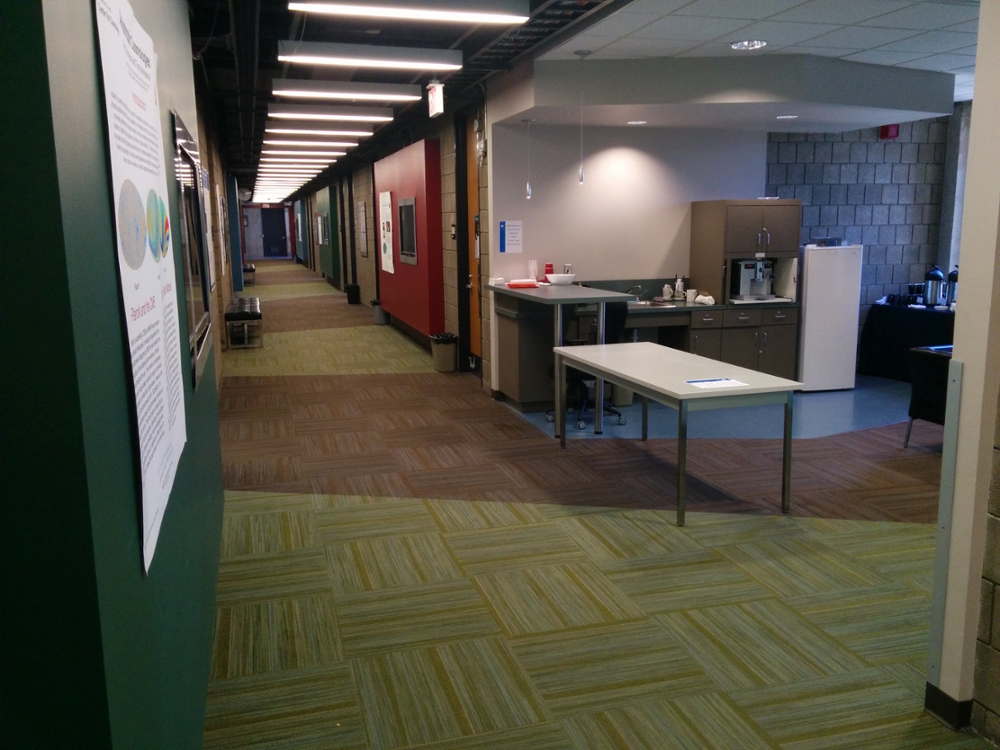
 The McWilliams Corridor Initiative is a reimagining of the space that visitors interact with as they move through the Center. This real life (not virtual) project is currently being carried out. Data and results from surveys of the Universe and computer models will be presented to visitors in multiple forms. Updates will be continuous and automated, with content being hosted by a centralized visualization store with easy access for Center scientists to make additions. The old system for driving corridor displays is being replaced by individual Rasberry Pi computers, and Pi Presents software, forming the first round of a new MCS-wide display paradigm. Touchscreen directories at the entrance of the Center will include interactive material, including the cosmology video game "Galaxy formation" written by alumnus John Choi and undergraduate physics students. A software framework for scientific visualizations is being developed, highlighting those generated on facilities at the Pittsburgh Supercomputing Center (PSC), such as the Vera computer cluster. The Center's interaction and meeting space will host 3D printed sculptures of astronomical data including large-scale maps of the Universe, enhancing the experience for blind and partially sighted visitors. The Initiative is a collaboration between MCS IT (Al Scheuring and Dave Olcott), the PSC (Juan Puerto and John Urbanic) and CMU Physics (Rupert Croft).
The McWilliams Corridor Initiative is a reimagining of the space that visitors interact with as they move through the Center. This real life (not virtual) project is currently being carried out. Data and results from surveys of the Universe and computer models will be presented to visitors in multiple forms. Updates will be continuous and automated, with content being hosted by a centralized visualization store with easy access for Center scientists to make additions. The old system for driving corridor displays is being replaced by individual Rasberry Pi computers, and Pi Presents software, forming the first round of a new MCS-wide display paradigm. Touchscreen directories at the entrance of the Center will include interactive material, including the cosmology video game "Galaxy formation" written by alumnus John Choi and undergraduate physics students. A software framework for scientific visualizations is being developed, highlighting those generated on facilities at the Pittsburgh Supercomputing Center (PSC), such as the Vera computer cluster. The Center's interaction and meeting space will host 3D printed sculptures of astronomical data including large-scale maps of the Universe, enhancing the experience for blind and partially sighted visitors. The Initiative is a collaboration between MCS IT (Al Scheuring and Dave Olcott), the PSC (Juan Puerto and John Urbanic) and CMU Physics (Rupert Croft).
A. Miguel Holgado
Astrophysics and Cyberinfrastructure Initiatives for Decihertz Garvitational-Wave Missions
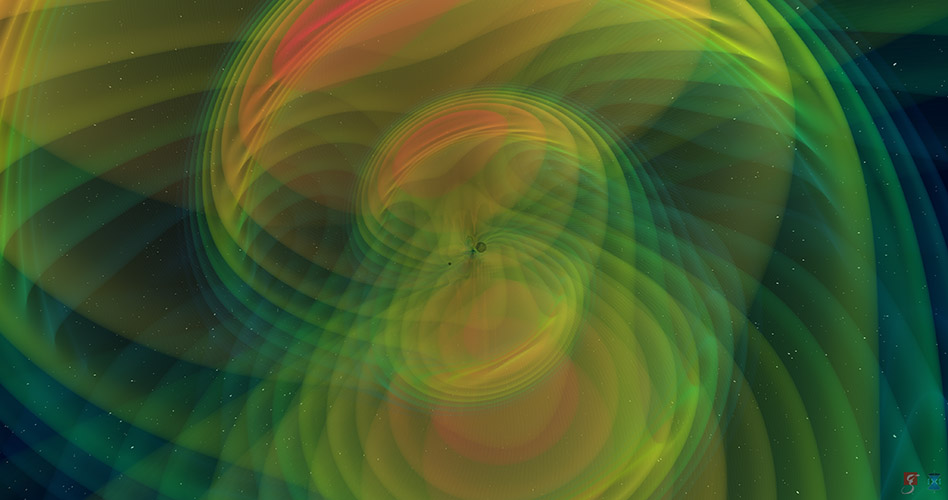
Image credit: N. Fischer, H. Pfeiffer, A. Buonanno, (Max Planck Institute for Gravitational Physics), Simulating eXtreme Spacetime (SXS) Collaboration
 We carried out a study on the prospects for decihertz GW astronomy with GW190521, the heaviest binary black-hole merger that LIGO-Virgo has observed thus far. This resulted in an ApJL publication with the authors including myself, Co-Investigator Carl Rodriguez, and his undergraduate student.
We carried out a study on the prospects for decihertz GW astronomy with GW190521, the heaviest binary black-hole merger that LIGO-Virgo has observed thus far. This resulted in an ApJL publication with the authors including myself, Co-Investigator Carl Rodriguez, and his undergraduate student.
We also organized a virtual workshop on multiband gravitational-wave astronomy that took place during May 24-26, and aimed to establish a dialogue among theorists, numericists, data scientists, and experimentalists on the science enabled with multiband GW observations, the cyber-infrastructure requirements for such endeavors, and efforts to bridge the gap between LISA and LIGO. This virtual workshop will lay the foundation for a larger in-person workshop to take place in the future in order to continue engaging the gravitational-wave community in preparation for this era.
I also have been mentoring an undergraduate student in machine-learning applications for decihertz GW sources. We will be continuing this research during the summer months and plan to submit the results of our study for publication around the end of this summer.
Hy Trac
Bayesian Deep Learning for Cosmological Applications
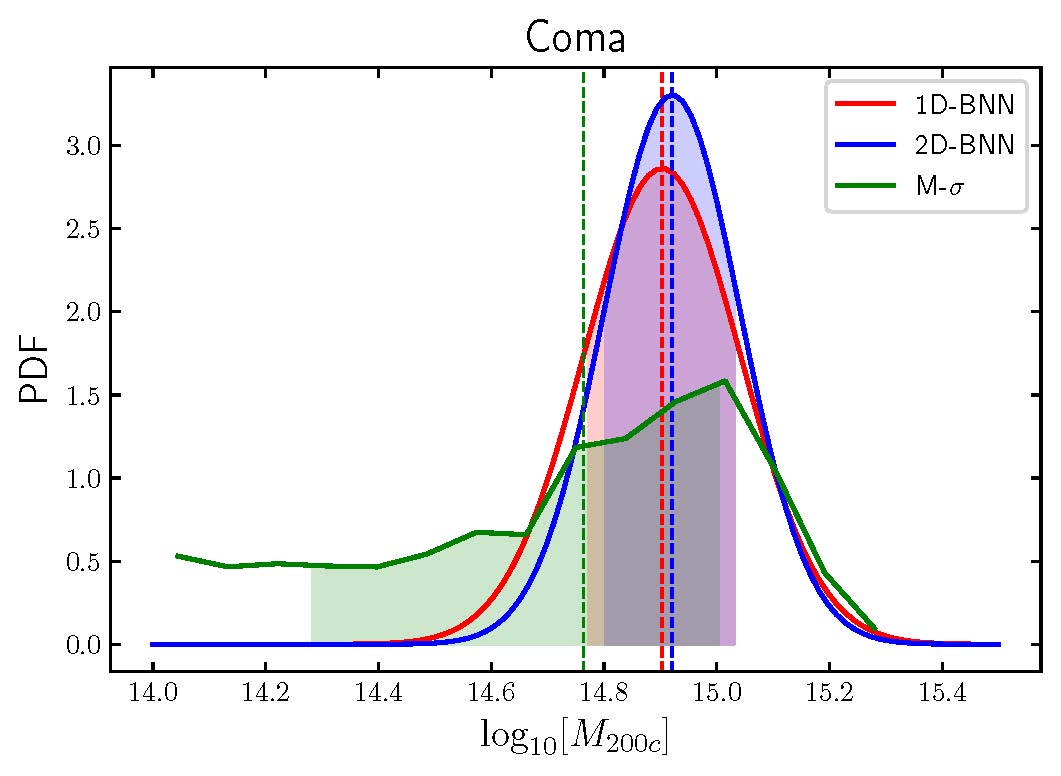
 In “Approximate Bayesian Uncertainties on Deep Learning Dynamical Mass Estimates of Galaxy Clusters” (Ho et al. 2021), we developed several novel techniques and a Python code for estimating Bayesian posteriors for inference with deep learning. Our Bayesian neural networks (BNN) build upon convolutional neural networks (CNN) by adding three algorithms for estimating uncertainties. In the Point and Gauss modules, the final layer outputs the posterior as fixed-width and variable-width Gaussians, respectively, while in the Classify module, we assign probabilities to different output bins. This work addresses one of the major shortcomings with standard machine learning approaches in that they usually yield results without any uncertainties. As an example cosmological application, we train and test on mock observations of galaxy clusters to predict cluster masses from the dynamics of galaxies. We show accurate recovery of predictive percentiles to within 1% of their empirical value.
In “Approximate Bayesian Uncertainties on Deep Learning Dynamical Mass Estimates of Galaxy Clusters” (Ho et al. 2021), we developed several novel techniques and a Python code for estimating Bayesian posteriors for inference with deep learning. Our Bayesian neural networks (BNN) build upon convolutional neural networks (CNN) by adding three algorithms for estimating uncertainties. In the Point and Gauss modules, the final layer outputs the posterior as fixed-width and variable-width Gaussians, respectively, while in the Classify module, we assign probabilities to different output bins. This work addresses one of the major shortcomings with standard machine learning approaches in that they usually yield results without any uncertainties. As an example cosmological application, we train and test on mock observations of galaxy clusters to predict cluster masses from the dynamics of galaxies. We show accurate recovery of predictive percentiles to within 1% of their empirical value.
Upcoming in “The Dynamical Mass of the Coma Cluster” (Ho et al. 2021 in prep, to be submitted to Nature Astronomy), we apply our methods to infer the mass of the famous Coma cluster, where Fritz Zwicky first postulated the existence of dark matter in 1933. In the accompanying figure, we show the posterior likelihood of the mass of Coma. BNN using 1D (red) and 2D (blue) dynamical information give consistent results that have significantly smaller uncertainties compared with the traditional method of estimating mass using the mass(M)-velocity dispersion(sigma) scaling relation (green). Rigorous modelling of cluster mass posteriors is necessary for using cluster abundance measurements to constrain fundamental cosmological parameters such as the dark matter and dark energy densities.
Julian Uran/PSC
COSMO, a REST API for BT3 Cosmology Data
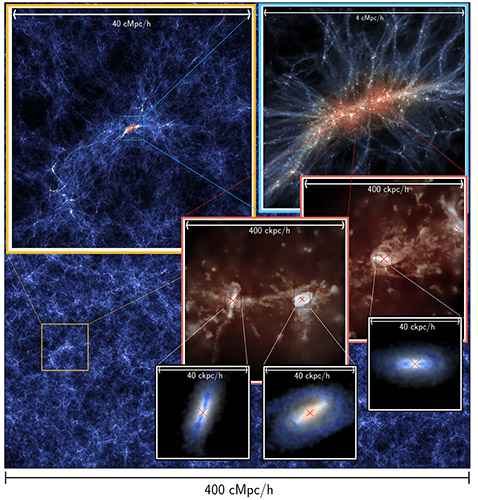
Image credit: Yueying Ni (McWilliams Center for Cosmology, CMU)
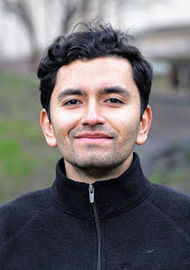 Over the course of Summer 2020, COSMO was implemented as a proposal for managing the multiple aspects that other approaches address, but not by using a centralized platform for making data readily available. In other words, COSMO is an umbrella framework for describing and sharing simulation datasets using multiple endpoints, such as a web portal, a RESTful API, and Globus; from which the data can be copied and explored in real-time using different approaches, providing different options so users can tap into it using the interface that better suits their needs, while not having to transfer the full set of files to start that exploration.
Over the course of Summer 2020, COSMO was implemented as a proposal for managing the multiple aspects that other approaches address, but not by using a centralized platform for making data readily available. In other words, COSMO is an umbrella framework for describing and sharing simulation datasets using multiple endpoints, such as a web portal, a RESTful API, and Globus; from which the data can be copied and explored in real-time using different approaches, providing different options so users can tap into it using the interface that better suits their needs, while not having to transfer the full set of files to start that exploration.
Having that in mind, the BlueTides Simulation was used as Proof of Concept for COSMO, being one of the largest calculations running on HPC at any point, and the team has been continuing working so more datasets can be integrated to COSMO. Special thanks to Nianyi Chen and Wanting Huang, who provided their expertise over the course of the project and made the idea a reality. A total of $21,881 were used in total for the project, including salaries, fringe, and computing support.
Matt Walker
A Novel Search for Subgalactic Dark Matter Halos
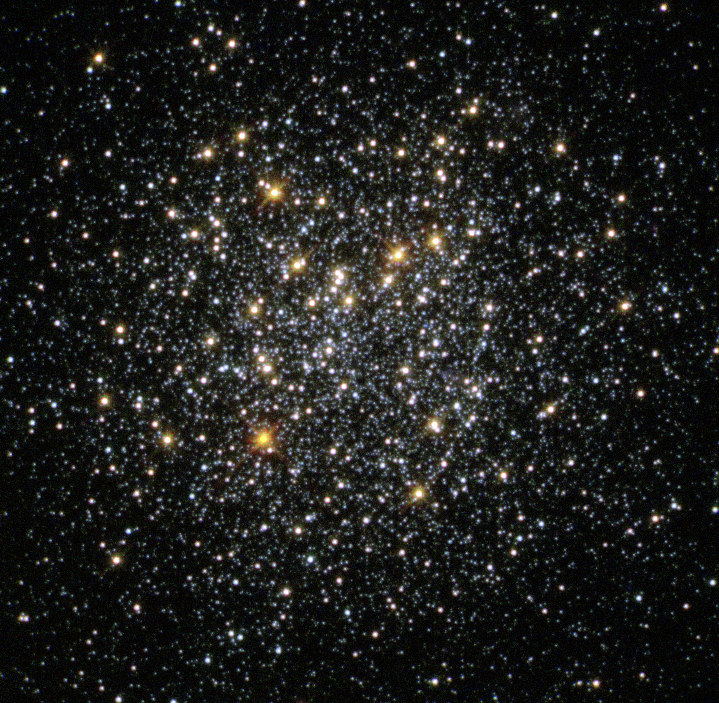
Image credit: ESA/Hubble
 The most widely separated binary star systems are fragile, vulnerable to disruption by external tidal forces and perturbations by objects passing nearby. Under the 'cold dark matter' (CDM) paradigm for cosmic structure formation, the dense halos that host the Milky Way's dwarf galaxy satellites should be hostile to the survival of wide binary systems. In order to test this prediction, we are planning observations to search for wide binaries within dwarf galaxies.
The most widely separated binary star systems are fragile, vulnerable to disruption by external tidal forces and perturbations by objects passing nearby. Under the 'cold dark matter' (CDM) paradigm for cosmic structure formation, the dense halos that host the Milky Way's dwarf galaxy satellites should be hostile to the survival of wide binary systems. In order to test this prediction, we are planning observations to search for wide binaries within dwarf galaxies.
During the Fall 2020 semester, McWilliams/PSC seed funding supported Ph.D. student Chris Kervick's development of methodology that is capable not only of detecting wide binary stars within nearby dwarf galaxies, but also of inferring the distribution of their separations. Kervick translated the geometry of wide binary systems into a likelihood function that operates directly on unbinned stellar position data and accounts for contributions from unassociated pairs projected along similar lines of sight.
Kervick applied this analysis to 40 synthetic data sets generated to mimic the total luminosities, surface brightnesses and distances observed for the Milky Way's known dwarf-galactic satellites, with wide binaries inserted by hand to represent different dark matter scenarios. The results show accurate recovery of parameters that govern the wide binary population, with sensitivity to distinguish among input models. This work will be presented in a paper to be submitted during summer 2021, and served as the foundation for a successful for a James Webb Space Telescope program, which will be executed during the first cycle of the JWST mission.
